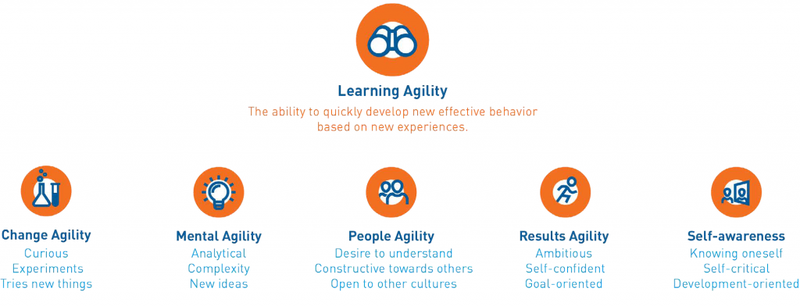Why Agile Leadership is Critical for Success
Leadership is what drives the organisation. Employees look to management to guide them in unknown situations, so it’s critical for leaders to be able to manage change effectively and chart the way forward in times of crisis. This was clearly illustrated at the start of the COVID-19 pandemic, when the most successful leaders (and therefore organisations) were able to pivot, adapt and guide their teams through the uncertainty.
Agile leadership is a model of management that is designed for the demands of 21st century organisations. In most industries, leaders can no longer rely on traditional management styles that emphasise authority. Leadership Agility means being flexible, empowering, collaborative, impactful and self-aware.
Measuring Agility of Leaders in your Company
Agile leadership can be measured via Learning Agility: a well-researched meta-competency defined as the ability to learn effectively in the face of new demands and changing expectations.
A recent meta-analysis studied the relationship between leadership success and Learning Agility. The results showed that 55% of leadership success is due to Agility, reinforcing how critical an agile management style is for modern organisations.
Learning Agility vs. Cognitive Ability in your Organisation
Many organisations rely on measurements of cognitive ability to make hiring and promotion decisions. Indeed, research shows that cognitive ability has strong links with job performance. However, meta-analysis research has noted that learning Agility has a stronger relationship with leader performance than cognitive ability (55% vs 42%). This means that, for leadership, Learning Agility is a critical area of focus – even more so than cognitive ability.
Measuring Learning Agility, as opposed to cognitive ability, has the following benefits:
-
Avoids adverse impact.
-
Decreases defensive reactions to an “intelligence” test.
-
Provides an overall view of behaviours that leaders can develop.
Delving into Agility and Agile Behaviours
The Lumenii Learning Agility assessments provide the means by which to measure, benchmark and develop Learning Agility. Reports include staff development tips, which enable the individual to get started on their individual development plan.

Learning Agility is not stagnant; it can be improved with ongoing development. As research shows, this development is worth the effort to increase leadership performance and foster an agile culture across the business. Leadership Agility is increasingly becoming a requirement for organisational success and acceleration, making it an imperative to build agile leaders in your business.

Author
Caitlin is a Senior Psychologist & Marketing Specialist. Her focus is on research, thought leadership in the areas of Agility, engagement & talent management.